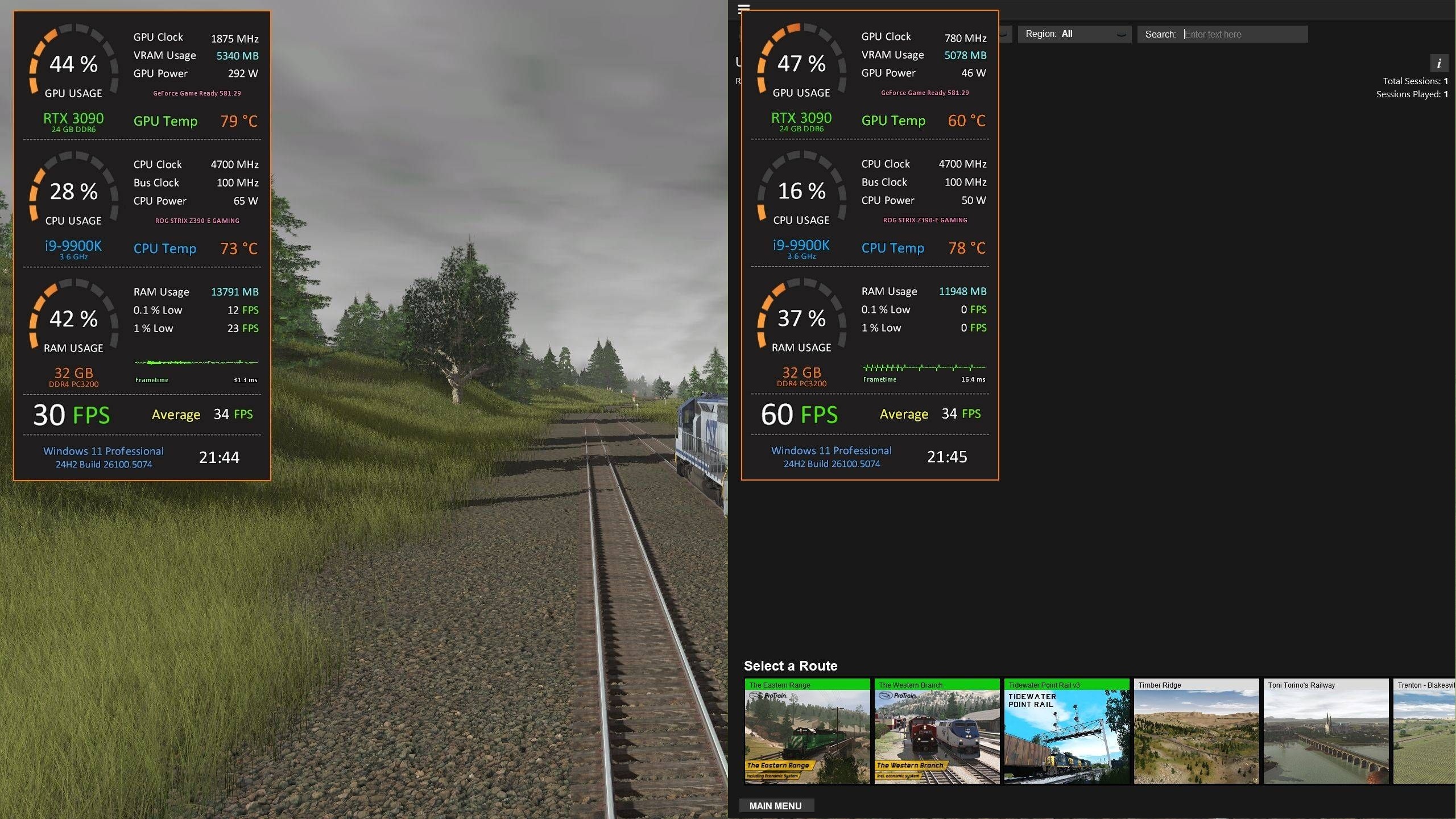I have Trainz Plus build 126280 with the same problems on my large routes. In Surveyor, it seems to be the result of moving around the route a lot vs working in a small area. Never had this problem in older versions of Trainz.
Increasing my PCs RAM from 16 to 32gb did not e
I have Trainz Plus build 126280 with the same problems on my large routes. In Surveyor, it seems to be the result of moving around the route a lot vs working in a small area. Never had this problem in older versions of Trainz.
Increasing my PCs RAM from 16 to 32gb did not entirely solve the problem. One symptom is that, in Surveyor, track and road splines no longer redraw when you move spline points. So, you have spline points that are no longer on what appears to be the spline. When this happens, the only solution I have found is to save, exit, and restart Trainz.
I believe the cache function is not working correctly and over time, I run out of memory. If N3V would compare the code that manages the cache in new versions vs older versions, they could find the problem.
"in Surveyor, track and road splines no longer redraw when you move spline points. So, you have spline points that are no longer on what appears to be the spline. When this happens, the only solution I have found is to save, exit, and restart Trainz."
I have the same problem on my route as well and have to restart traniz to solve it. All my other routes work fine using
Trainz 22 PE build 129335, which I use to edit the route, then I copy the same route into Trainz Plus Build 131307 with no problems, moving track works fine, can't understand why I have this problem with this one route in Trainz 22PE
Could it be because the size is 329mb

